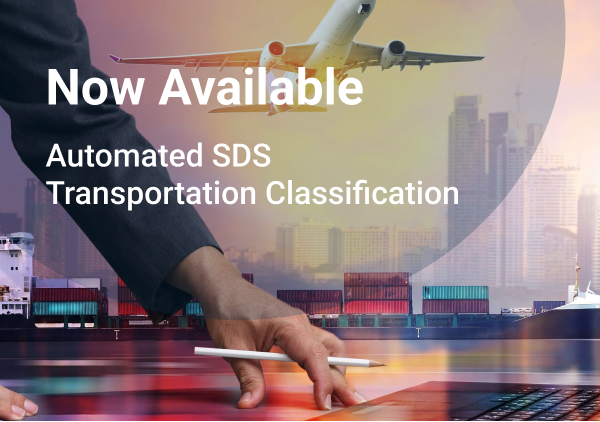
Q-SDS Now Offers Rule Driven Population of Section 14
Effective immediately, Quantum’s Smart SDS Authoring software has been enabled with rules to populate the data in Section 14 of the SDS.
Background
Quantum’s SDS Authoring software generates SDS data per the requirements of the United Nations’ Globally Harmonized System of Classification and Labelling of Chemicals (GHS), known as the “Purple Book”. Section 14 of the SDS requires the United Nations (UN) Number, proper shipping name and its related data.
The classification of Transport data is detailed in the United Nations’ UN Recommendations on the Transport of Dangerous Goods – Model Regulations, known as the “Orange Book”.
Each entry in the Transport of Dangerous Goods List is characterized by a UN Number. Each UN Number has corresponding data that also needs to appear in section 14.
The current revision of the Orange Book is 842 pages long and details the methods of determining the proper UN Number for a product. The classifications are broken into 4 types (sorted by precedence):
a. Single entries for well-defined substances, such as: UN1090 Acetone or UN1194 Ethyl Nitrate Solution.
b. Generic entries for well-defined groups, substances, or articles, such as: UN1133 Adhesives, UN1263 Paint, or UN1266 Perfumery products with flammable solvents.
c. Specific n.o.s. (not otherwise specified) entries covering groups of substances or articles of a particular chemical or technical nature, such as: UN1477 Nitrates, inorganic, n.o.s. or UN1987 Alcohols, n.o.s..
d. General n.o.s. entries covering groups of substances or articles meeting the criteria of one or more classes or divisions, such as: UN3286 Flammable liquid, toxic, corrosive, n.o.s. or UN1993 Flammable liquids, n.o.s.
Quantum’s SDS software has always had the full dataset from the UN’s Orange Book. In the past the user needed to associate the UN Number to the product and then the related data would be associated with the product.
Now, Quantum has introduced rules in its Smart Software to predict the UN Number based on the SDS data.
Two Types of Rules
There are two types of Transportation Rules within Quantum’s product. The first to be evaluated are Ingredient based rules. These rules are based on a CAS Number, percentage of the ingredient and, if appropriate, the physical state of the mixture. These rules will be used to evaluate classifications of type a) and c) above.
For example:
UN1655 “Nicotine compounds, solid, n.o.s.” will trigger if:
1: the product is a solid.
2: the product has > 51% Nicotine (CAS Number 54-11-5).
UN3144 “Nicotine compounds, liquid, n.o.s.: will trigger if:
1: the product is a liquid.
2: the product has > 51% Nicotine (CAS Number 54-11-5).
There are currently 2612 Transport Ingredient Rules defined in Q-SDS.
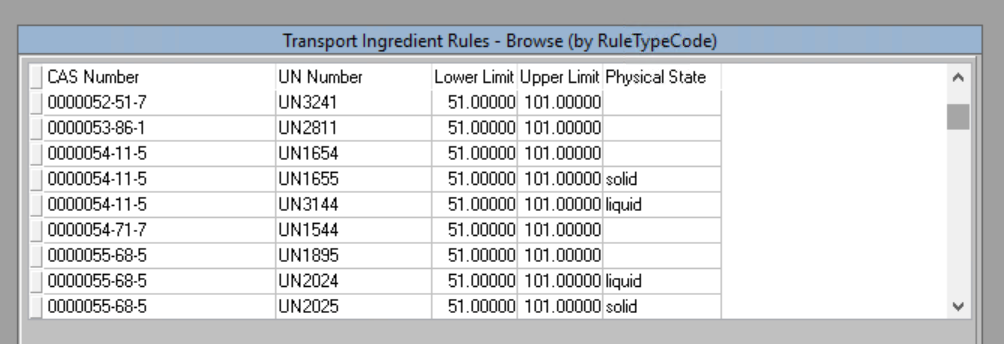
If none of the Transport Ingredient Rules are a match, then the Transport Classification Rules are evaluated. These rules will populate the GHS Classification based transport categories. These rules will be used to evaluate classifications of type d) above. Note: At this time, we do not have the information to predict the classification of type c).
There are UN Numbers with 1 to 3 associated classifications or divisions. The rules with 3 classifications are evaluated first.
For example: UN3286 “Flammable liquid, toxic, corrosive, n.o.s.” will be triggered if the product has is a flammable liquid (category 1, 2 or 3) AND has the skull and crossbones pictogram AND has the corrosive pictogram.
If none of the classifications with 3 conditions apply, the categories with 2 classifications are evaluated.
For example: UN1992 “Flammable liquids, toxic, n.o.s.” will be triggered if the product has is a flammable liquid (category 1, 2 or 3) AND has the skull and crossbones.
If none of the categories with 2 classifications apply, the single classification will be evaluated.
For example: UN1993 “Flammable liquids, n.o.s.” will be triggered if the product has is a flammable liquid (category 1, 2 or 3).
There are currently 76 Transport Classification Rules in the database.
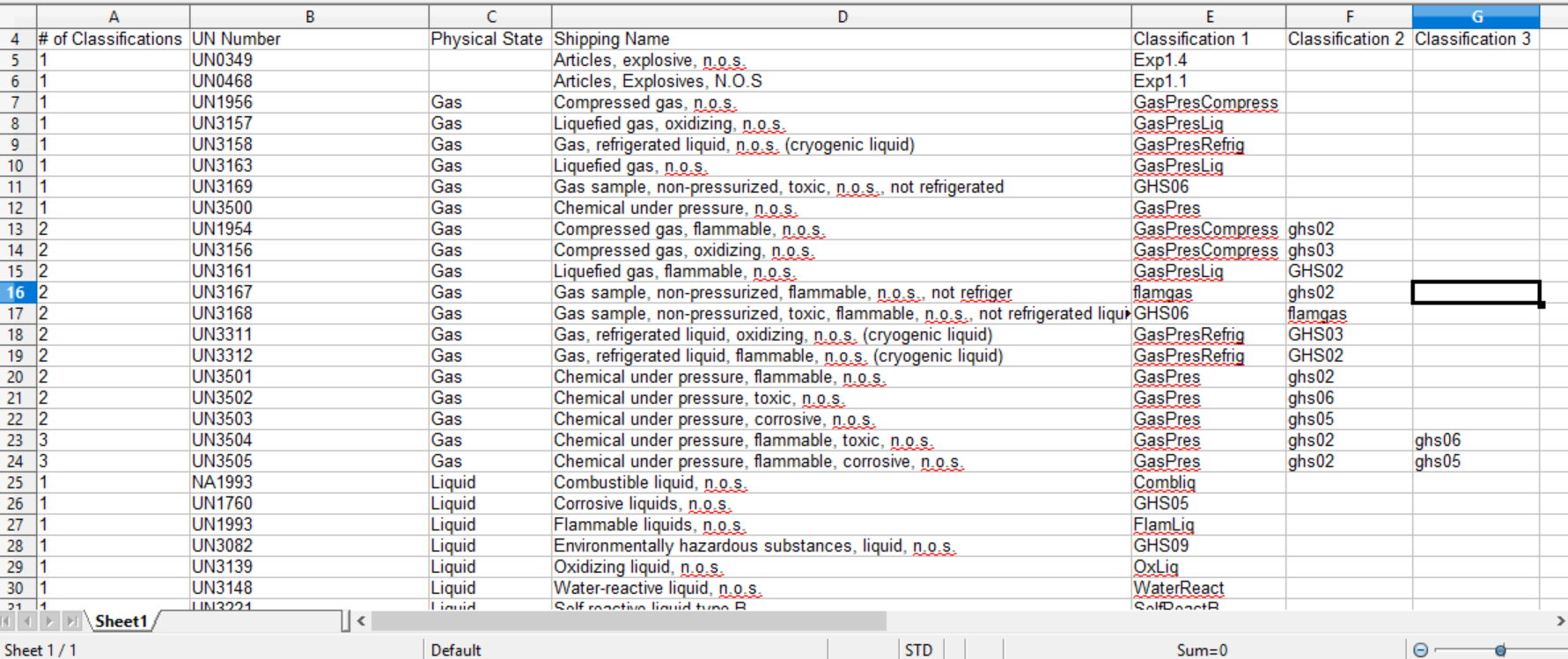
A product with no ingredients specific to the transport ingredient rules, that has these GHS Classifications:
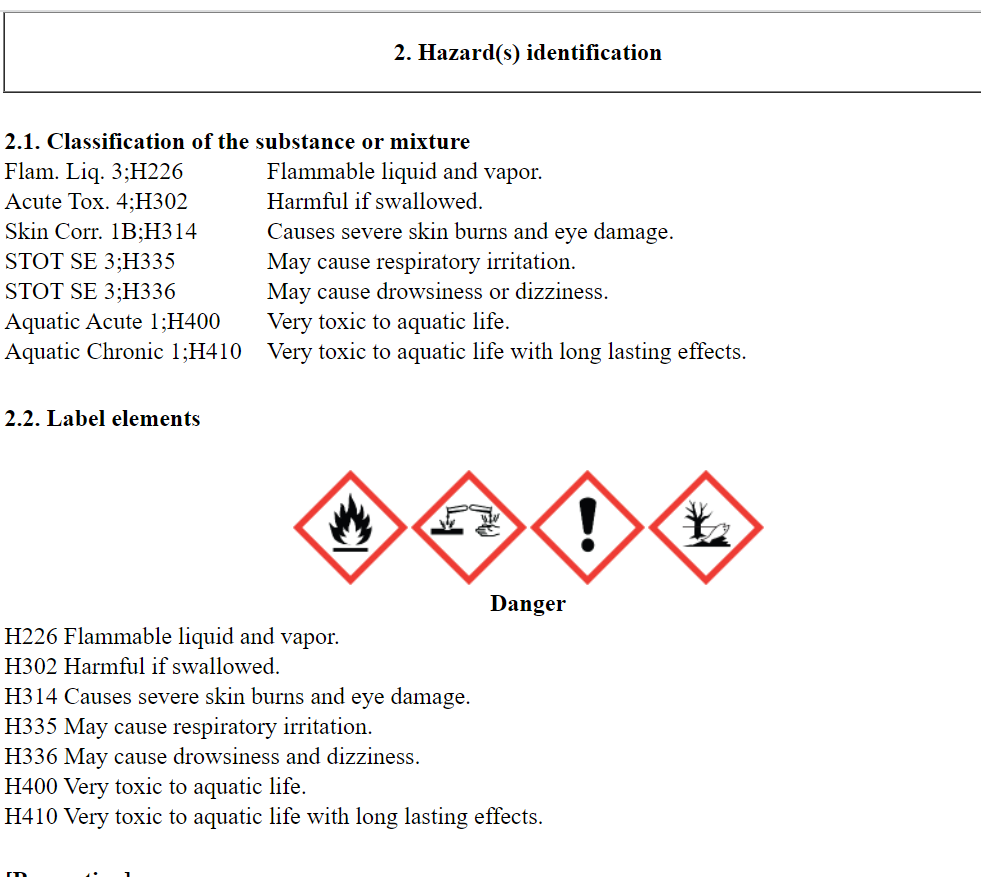
Will trigger this data for Section 14.
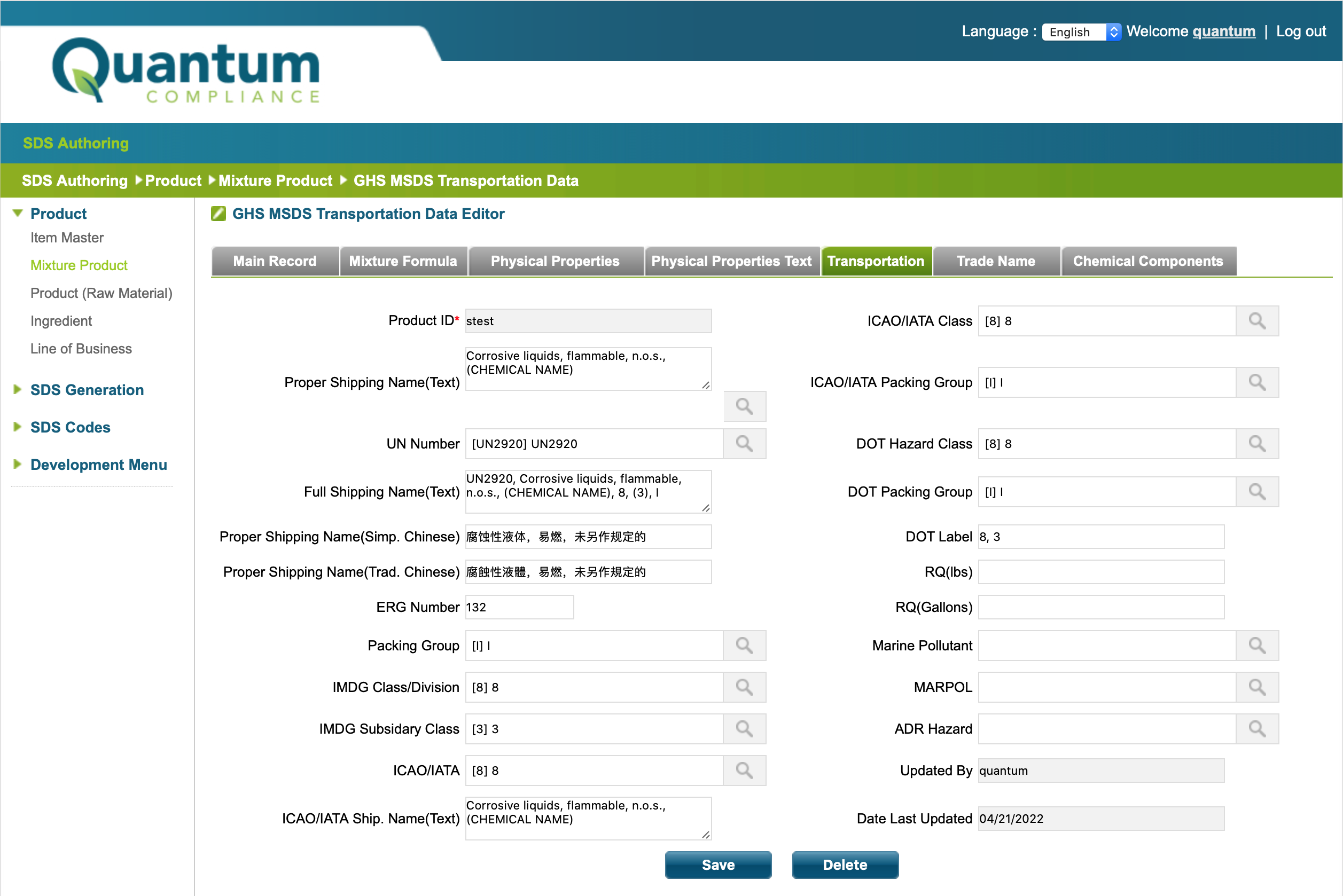
And Section 14 of the US SDS will look like this.
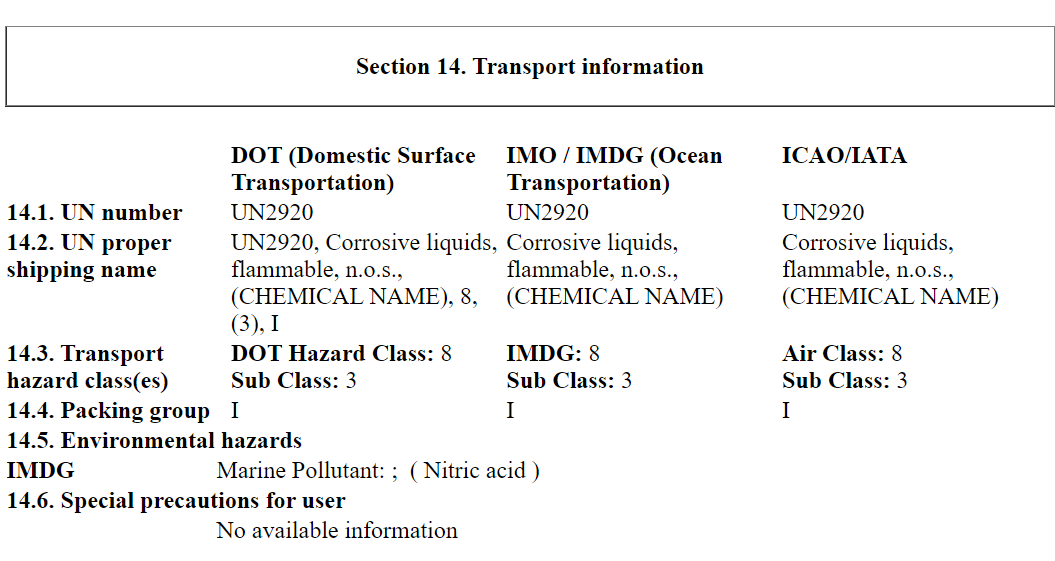
In the case of “n.o.s.” categories (not otherwise specified) a (CHEMICAL NAME) placeholder will be added to the shipping name, this will need to be replaced with the appropriate value for the product. Quantum highly recommends that the user evaluate the UN Number and shipping name generated by the rules.
Output Refinement Notes
Please note that there are often several defensible UN Numbers that may be associated with a product, Quantum’s transportation rules will predict a UN Number based on the information available, each UN Number must be verified, and any (CHEMICAL NAME) placeholders replaced before the SDS is authored.
Also, note that if there is non-default data in the product’s Transportation section, the calculation will be skipped (It will not overwrite your data if the generation is run again).
Moving You Forward
Quantum’s SDS Authoring software has been commercially available since 1993 and is used world-wide to author SDS in 38 languages. We continue to refine our software to improve the efficiency and accuracy of the product, and the new transport rules are just the latest example of these improvements.

